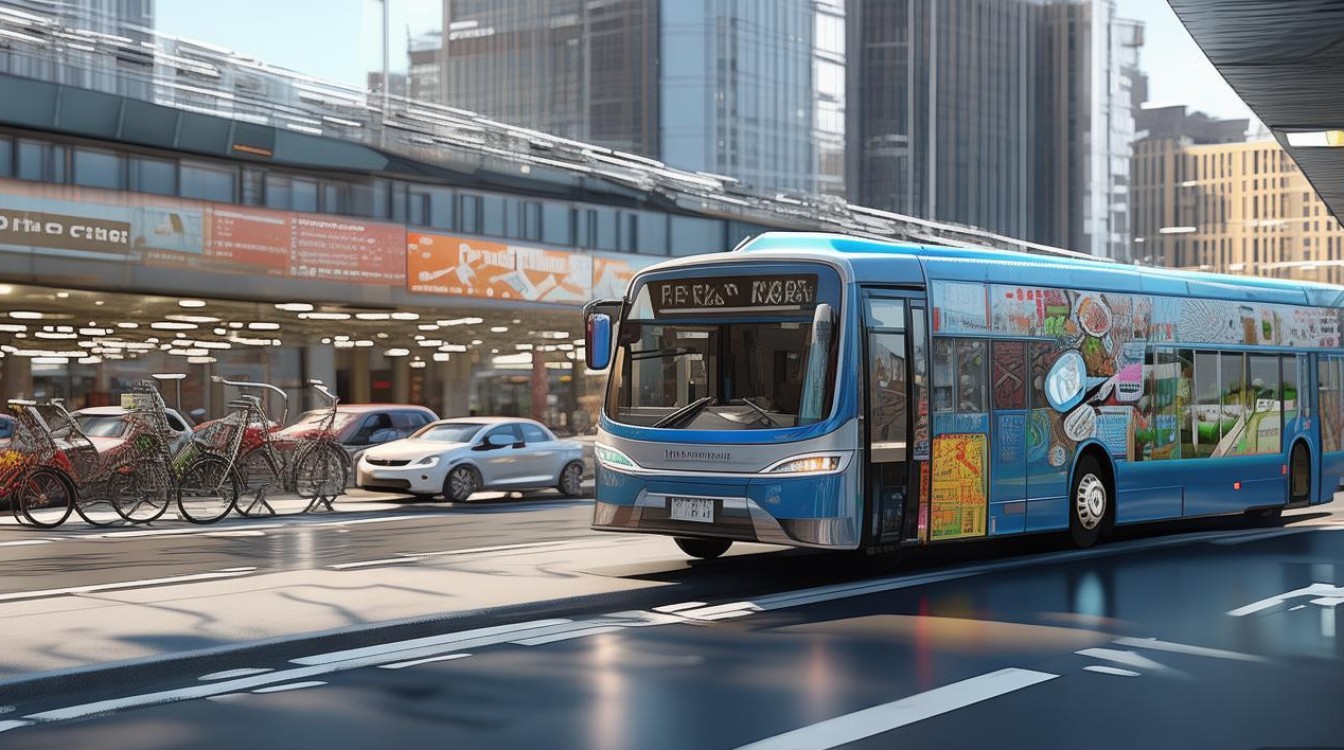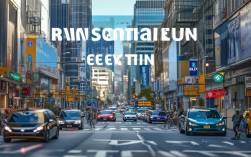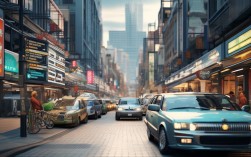在英语口语考试或日常交流中,transportation(交通)是一个高频且实用的话题,涵盖日常出行方式、城市交通系统、交通问题及未来趋势等多个维度,掌握相关词汇、表达和观点,不仅能帮助流利沟通,还能深入探讨社会议题,以下从核心话题展开,结合场景化表达和实用句型,助力全面提升口语能力。

日常出行方式:选择与体验
日常出行是最基础的交通话题,重点在于描述常用方式及其优缺点,常见的交通方式包括步行(walking)、骑行(cycling)、公共交通(public transport,如bus/subway/train)、出租车/网约车(taxi/ride-hailing,如Uber/Didi)以及私家车(private car)。
核心词汇与表达
- 步行:eco-friendly(环保的)、convenient for short distances(短距离便捷)、good for health(有益健康)。
例句:I usually walk to work since it’s only a 15-minute walk, and it helps me stay active. - 骑行:energy-saving(节能)、flexible(灵活)、requires bike lanes(需要专用车道)。
例句:Cycling to the supermarket is my go-to choice on weekends—it’s quick and I don’t have to worry about parking. - 公共交通:cost-effective(性价比高)、reliable(可靠)、crowd during rush hour(高峰期拥挤)。
例句:The subway is the backbone of my daily commute; it’s punctual and even saves me money compared to driving. - 私家车:comfortable(舒适)、door-to-door service(门到门服务)、traffic jams(堵车)。
例句:Though driving offers more comfort, I avoid it during rush hour—the traffic here is terrible!
对比讨论
在口语中,常需对比不同方式的选择理由,可通过“优势(advantage)+ 劣势(disadvantage)”结构展开:
- 公交 vs 私家车:Buses are cheaper but less flexible; private cars give you freedom but cost more and contribute to pollution.
- 地铁 vs 出租车:The subway is faster in heavy traffic, but taxis are more convenient when carrying heavy luggage.
城市交通系统:效率与挑战
针对特定城市的交通系统,可从基础设施(infrastructure)、运营效率(efficiency)和现存问题(problems)切入,体现批判性思维。
系统构成与评价
以北京为例,其交通系统包含:
- 地铁(Subway):覆盖广(over 20 lines)、准点率高(high punctuality),但高峰期拥挤(overcrowded)。
- 公交(Bus):线路密集(extensive network)、票价低(low fare),但易受路面交通影响(prone to traffic delays)。
- 共享单车(Shared bikes):解决“最后一公里”问题(solve the "last-mile" issue)、扫码即用(convenient QR-code access),但乱停放问题突出(random parking)。
常见交通问题
全球城市普遍面临三大问题:
| 问题类型 | 具体表现 | 影响 |
|--------------------|---------------------------------------|-----------------------------------|
| 交通拥堵(Traffic congestion) | 高峰期车速低于20km/h | 时间浪费(time waste)、碳排放增加(increased carbon emissions) |
| 停车困难(Parking issues) | 商圈停车位一位难求 | 违停罚款(fines for illegal parking) |
| 公共交通不足(Inadequate public transport) | 郊区线路少、班次稀疏 | 居民依赖私家车(over-reliance on cars) |
交通趋势与创新:科技与环保
未来交通是口语考试中的加分项,展现对前沿动态的了解,重点可围绕科技(technology)和环保(sustainability)展开。
科技驱动变革
- 智能交通系统(Intelligent Transport Systems, ITS):通过实时数据(real-time data)优化信号灯(traffic lights)、预测拥堵(predict congestion),如杭州的“城市大脑”。
- 自动驾驶(Autonomous vehicles):减少人为失误(reduce human error)、提高道路利用率(enhance road efficiency),但面临法规和技术成熟度挑战(legal and technical challenges)。
- 网约车平台(Ride-hailing platforms):Uber、Lyft等通过算法匹配供需(match supply and demand),拼车功能(carpooling)进一步减少车辆数量。
绿色出行倡议
环保是全球共识,各国推动措施包括:
- 新能源车(New energy vehicles, NEVs):中国补贴电动车(subsidies for EVs)、欧洲禁售燃油车时间表(ban on fuel cars)。
- 低碳政策(Low-carbon policies):伦敦拥堵费(congestion charge)、北京限行政策(license plate restriction)。
- 共享经济(Sharing economy):共享汽车(car-sharing)、共享电动车(e-scooter sharing)降低人均车辆保有量(per capita car ownership)。
场景化口语应用:考试与实战
在雅思、托福等口语考试中,transportation话题常以“个人经历+观点+建议”结构出现,以下为高频问题及参考思路:
Part 1: 简短问答
-
Q: How do you usually go to school?
A: I typically take the subway because it’s faster than driving, and there’s a station near my home. Plus, I can use the time to listen to podcasts. -
Q: Do you prefer public transport or private cars?
A: I prefer public transport for daily commutes—it’s cheaper and environmentally friendly. But I’d choose a car for family trips or carrying heavy items.
Part 2: 个人陈述(Describe a traffic problem in your city)
- 核心要点:问题描述(拥堵)→ 具体场景(早高峰环路)→ 影响(迟到、污染)→ 解决建议(地铁扩建、错峰出行)。
- 参考句型:
- "One pressing traffic issue here is the severe congestion during morning rush hours, especially around the Second Ring Road."
- "This leads to longer travel times—what used to be a 20-minute drive now takes over an hour—and increased air pollution from idling vehicles."
- "To address this, the government could expand subway lines and encourage flexible working hours to distribute traffic flow more evenly."
FAQs 相关问答
Q1: 如何在口语中流利对比不同交通方式的优缺点?
A1: 可采用“连接词+观点+具体例子”结构。
- 连接词:On the one hand... on the other hand... / While... / However... / In contrast...
- 观点+例子:While cycling is eco-friendly and good for short distances, it’s impractical in rainy weather or for long trips. For instance, I tried cycling to my aunt’s suburb last weekend, and the heavy rain made the journey miserable.
Q2: 描述未来交通时,如何避免内容空泛?
A2: 结合具体技术和场景展开,避免只说“科技会更发达”。
- In the future, I believe autonomous electric vehicles will dominate urban transport. Imagine a car that drives itself, uses renewable energy, and can be shared via an app—this would not only reduce accidents but also cut down on the number of cars on the road, making cities quieter and less polluted.
系统掌握交通话题的核心词汇、逻辑结构和实用表达,无论是日常交流还是口语考试,都能自信展开讨论,展现语言能力与社会洞察力。











